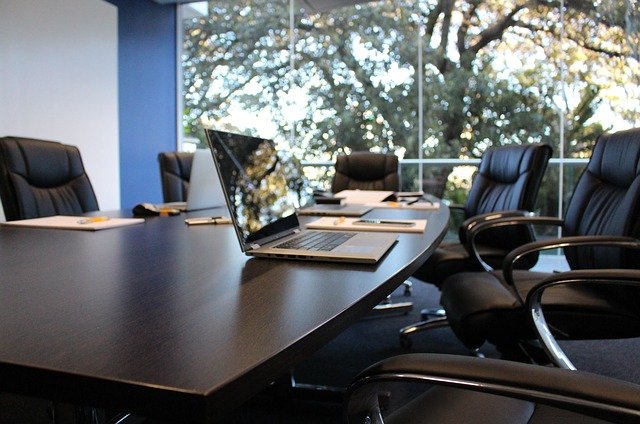The scale, speed, and severity of the coronavirus crisis is unlike anything we’ve seen in our nation’s history. In a matter of a few weeks, schools across the country shut down and most won’t reopen their physical campuses this academic year. No school system was completely prepared for what seemed like a near-impossible challenge: shifting to a fully remote model of education while simultaneously coordinating key student support services and adapting to evolving public health guidelines amidst a global pandemic.
We won’t know the full impact of the choices school leaders are making for quite some time, but some school systems may be better positioned than others to navigate the challenges posed by the current pandemic. School systems that already embrace more decentralized decision-making, either by supporting more autonomous district schools or charter schools, seem to be better adapting to the complex challenge of educating kids in the midst of a once-in-a-century pandemic.

Image by Jo_Johnston from Pixabay
We’re starting to see educators take action – often without clear guidance from central offices – to use whatever tools they can to reach their students. We know that there are vast inequities in students’ access to education during this crisis, so some teachers have been handing out Chromebooks and WiFi hotspots. In other communities, teachers are using print packets, telephones, and television broadcasts to reach students without access to technology. There are countless stories of individual teachers moving faster than their districts’ central offices, meeting with their classes on Zoom, offering supplemental instruction from a student’s porch, or leaving math problems in chalk on students’ driveways.
While it would be impossible and unreasonable to expect every teacher to figure out how to meet the needs of every student during this crisis, we’re also seeing how top-down decision-making by districts can go terribly wrong for teachers and students. One need look no further than affluent Fairfax County (VA), which had a disastrous roll-out of their virtual learning platform. Marred by poor planning, testing, and vendor management, it’s clear that whatever process Fairfax used to develop their plan, it wasn’t driven and tested by teachers.
The ideal model for decision-making in the face of this unprecedented crisis likely lies somewhere between centrally designed district plans and the individual efforts of teachers. In this middle ground, school-level staff have the flexibility to adapt to the specific needs of their students and communities. At the same time, central office leaders focus on providing guardrails to ensure a standard of equity and quality throughout their system of schools.
As school systems consider how they’ll operate this summer and next school year, they ought to resist the temptation to design all of their plans from the central office without the insights and involvement of teachers. Instead, they should support the entrepreneurial instincts of educators and adapt their bureaucracies to be more responsive to classroom-level needs. School system leaders can learn how to rely less on centralized planning by examining pre-COVID efforts to decentralize authority and create more autonomous schools. These include the Eight Cities we profiled, but there are also many other systems working to bring more decision-making authority to the school level. Across these school systems, decision-making structures take many different shapes, but their efforts are unified by a desire to make their system more responsive to the needs of students and families — an approach that may provide them with more agility to respond to the COVID-19 crisis.
Similarly, charter schools and charter school management organizations (CMOs) — which tend to have relatively lean central offices and are typically unconstrained by collective bargaining agreements — may also be well-positioned to innovate and adapt. Data from CRPE indicate that some CMOs are making key shifts to their instructional approach faster than many large urban districts while serving student populations with similar challenges.
While we don’t yet know what the status of the pandemic will look like when a new school year begins in the fall, leaders can prepare their systems to respond to dynamic circumstances by giving school leaders more autonomy. However, district leaders will need to balance the provision of more flexibility to schools with the need to prioritize quality and equity throughout their school system. This will mean helping to proliferate promising practices developed within individual schools while also providing safeguards to ensure that when new approaches don’t work, schools are able to quickly pivot back to more established practices.
Providing safeguards to ensure a “floor” of educational quality is challenging work and will be much easier for districts with pre-existing systemic approaches to improve school quality. Over the relatively short window between now and the beginning of next school year, this will mean a lot of trial-and-error, but the stakes are too high for kids not to leverage the ingenuity of teachers and principals to develop and stress-test solutions to the current crisis.
Of course, many decisions will still need to be made and coordinated by the central office. This is particularly true with respect to public health measures that can ensure a consistent level of safety for students, staff, and families, but it also applies to key logistical supports for schools. This includes transportation, facilities support, technology infrastructure, data management, and student support services. But district leaders may also be able to improve these centralized services by eliciting more ideas and feedback from the IT staff and food service workers on the front lines of these efforts.
As we work towards a new normal for public education, school systems will have to carefully consider how they can build on the entrepreneurial successes of educators in the first phase of the COVID-19 pandemic. Some districts are already leaning on the ingenuity and drive of their front-line educators to adapt and evolve in these unprecedented times. Those that aren’t ought to consider how they might better learn from the successes, failures, and ideas of the educators working to overcome the barriers to educating students during a pandemic.